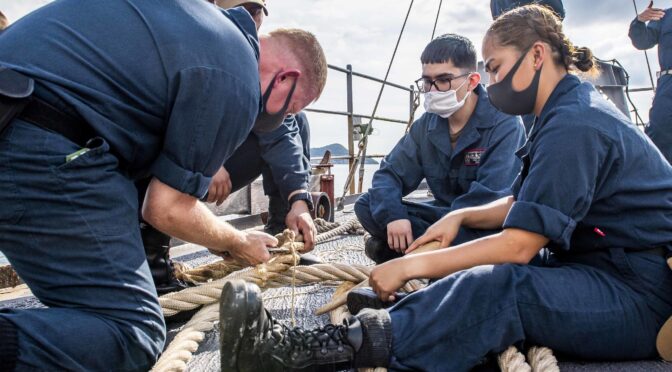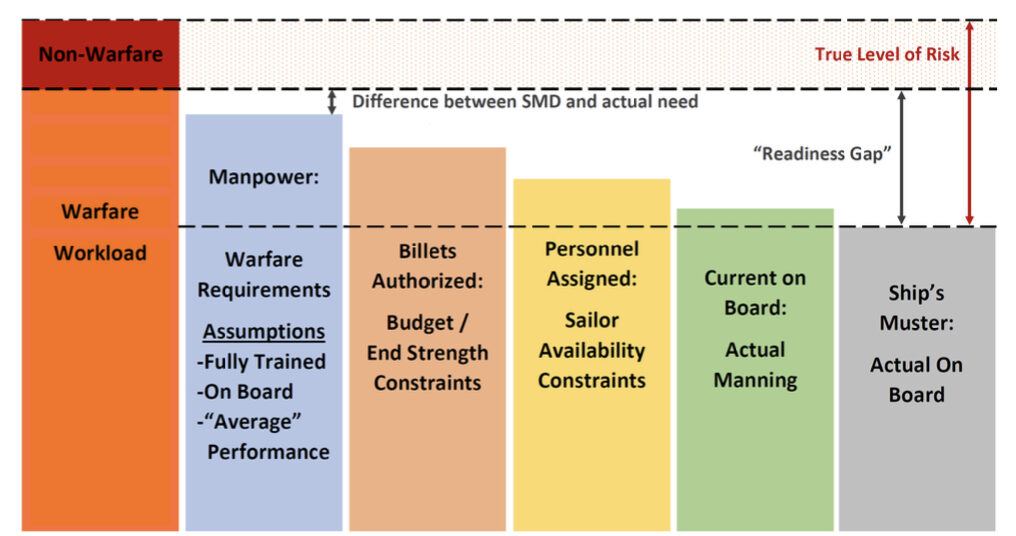Notes to the New CNO Series
By Sean F. X. Barrett, Mie Augier, and William F. Mullen, III
Calls for innovation, technological development, and establishing new organizations are commonplace across the national security enterprise.1 Indeed, integrating emerging technologies into formations by seeking new ideas, evaluating them with a rigorous process, and learning from the feedback is crucial to the continued viability of warfighting organizations. Such calls, however, tend to portray new technologies and weapons systems as panaceas to great power challenges while paying less attention to the importance of developing the warfighters who will actually employ them. By empowering people to find and fix problems, Get Real Get Better is an encouraging first step, but more meaningful steps can nudge the pendulum back towards Capt. Wayne P. Hughes Jr.’s first cornerstone — “Sailors matter most.”2 This goal can be furthered by investing in the training and education of Navy Sailors and officers, and cultivating a culture of mission command so they are prepared to make decisions and take initiative based on their commander’s intent.
The increasingly complex security environment demands that warfighters develop the intellectual agility to make decisions and transfer knowledge across domains, or apply it to entirely new and unforeseen situations while facing demanding constraints. As such, the culture of the Navy needs to change so that its best and brightest not only understand the value of lifelong learning and continuing their professional military education (PME), but that they are also formally incentivized to pursue both. Concrete incentives can include meritorious promotions and enhanced recognition when being considered for command and promotion. Seniors should positively recognize warfighters who complete advanced and terminal degree programs, and who return to the fleet where the benefits of their advanced education can be best utilized. By rewarding the application of education to fleet operations, careers will not be as negatively impacted by the opportunity costs typically associated with formal PME. Without such concrete incentives, Sailors may feel they can hardly deviate from narrowly pre-defined career paths to pursue valuable educational opportunities that would otherwise benefit both themselves as warfighters, as well as the service.
Since the U.S. military can no longer count on a material or technological edge against its competitors, all members of the sea services must help maintain and hone their intellectual edge. They must be able to out-think and out-learn any opponent, especially in dynamic and rapidly changing situations. This is their greatest advantage, but it is also perishable. If it is neglected due to other priorities, it will atrophy and wither away. For example, the Education for Seapower initiatives were a step in the right direction, but they faded away without a senior champion.3
The Navy must adopt a mission command philosophy and ensure it is practiced throughout the force to take full advantage of critical thinking skills and learning leaders. Seniors must issue their intent, then trust subordinates to make decisions and take initiative. Subordinates must trust their seniors to support them in the actions they take, and welcome constructive feedback along the way. Without the trust inherent in mission command, organizations lack the agility to take advantage of fleeting opportunities or adjust course when the original plan is no longer viable. In the anticipated operating environment, this could mean the difference between victory and defeat.
LtCol Sean F. X. Barrett, PhD, is a Marine intelligence officer currently serving as the Operations Officer for I Marine Expeditionary Force G-2. He has previously deployed in support of Operations Iraqi Freedom, Enduring Freedom, Enduring Freedom-Philippines, and Inherent Resolve.
Dr. Mie Augier is a Professor in the Department of Defense Management, and Defense Analysis Department, at the Naval Postgraduate School. She is a founding member of the Naval Warfare Studies Institute and is interested in strategy, organizations, leadership, innovation, and how to educate strategic thinkers and learning leaders.
MajGen William F. Mullen, III, USMC, retired after 34 years as an infantry officer. Among his many assignments, he served 3 tours in Iraq, and as a General Officer, was the President of U.S. Marine Corps University and Commanding General of Training and Education Command. He is also the co-author of Fallujah Redux, which was published in 2014 by the USNI Press and the author of What It Means To Be a Man, which was published by the Marine Corps University Press in 2023. Since retirement, he taught leadership at the University of Colorado and is currently a Professor of Practice at the Naval Postgraduate School (Department of Defense Management).
References
1. CIMSEC, for example, published a call for papers to pitch new capabilities in June 2023. Dmitry Filipoff, “Pitch Your Capability Topic Weeks Kicks Off on CIMSEC,” Center for International Maritime Security, June 5, 2023, https://cimsec.org/pitch-your-capability-topic-week-kicks-off-on-cimsec/. See also Jaspreet Gill, “INDOPACOM Standings Up New Directorate to Better Connect Industry, DoD Innovation Efforts,” Breaking Defense, August 28, 2023, https://breakingdefense.com/2023/08/indopacom-stands-up-new-directorate-to-better-connect-industry-dod-innovation-efforts/; Justin Katz, “EXCLUSIVE: Navy Weighs Creation of ‘Disruptive Capabilities’ Office to Rapidly Field Tech to Fleet,” Breaking Defense, August 30, 2023, https://breakingdefense.com/2023/08/exclusive-navy-weighs-creation-of-disruptive-capabilities-office-to-rapidly-field-tech-to-fleet/; Will Knight, “The AI-Powered, Totally Autonomous Future of War Is Here,” Wired, July 25, 2023; Leonardo Jacopo Maria Mazzucco, “Achieving More With Less: The U.S. Navy’s 5th Fleet Bets on Unmanned Vehicles and AI Systems to Bolster Maritime Domain Awareness,” Center for Maritime Strategy, August 21, 2023, https://centerformaritimestrategy.org/publications/achieving-more-with-less-the-u-s-navys-5th-fleet-bets-on-unmanned-vehicles-and-ai-systems-to-bolster-maritime-domain-awareness/.
2. Wayne P. Hughes, Jr. and Robert P. Girrier, Fleet Tactics and Naval Operations, 3rd ed. (Annapolis, MD: Naval Institute Press, 2018), 15-19.
3. The Department of the Navy, for example, removed funding increases associated with Education for Seapower in its Fiscal Year 2022 budget request. Diana Stancy Correll, “Navy Aims to Reduce End Strength, Cut Higher Education Funding in New Budget Request,” Navy Times, May 28, 2021, https://www.navytimes.com/news/your-navy/2021/05/28/navy-aims-to-reduce-end-strength-cut-higher-education-funding-in-new-budget-request/.
Featured Image: PEARL HARBOR (Aug 16, 2023) Lt. Christopher Shaw (Left), from Plaquemine, Louisiana, communications officer assigned to Unmanned Surface Vessel Division One, explains to University of Hawaii Navy ROTC midshipmen the operational capabilities of the unmanned surface vessel Ranger during a tour of the ship on Joint Base Pearl Harbor-Hickam, Hawaii, Aug. 16, 2023. (U.S. Navy photo by Chief Mass Communication Specialist Jonathan B. Trejo)





